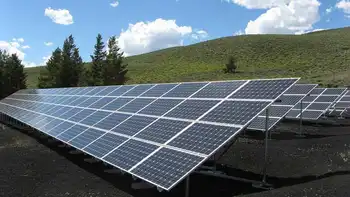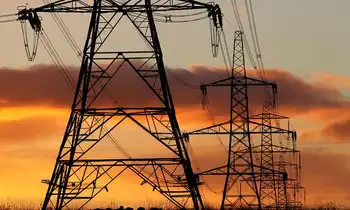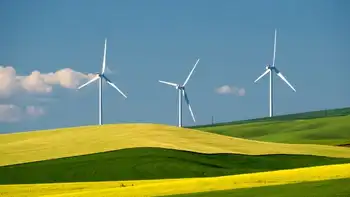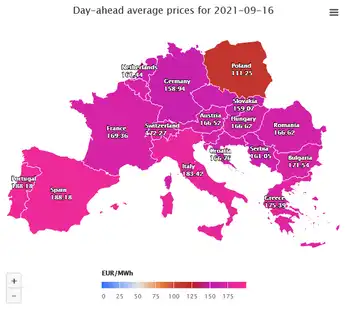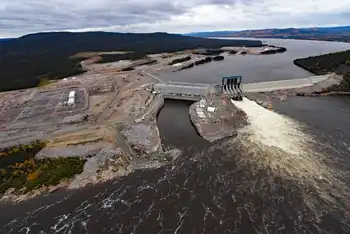USDA Grants $4.37 Billion for Rural Energy Upgrades

Protective Relay Training - Basic
Our customized live online or in‑person group training can be delivered to your staff at your location.

- Live Online
- 12 hours Instructor-led
- Group Training Available
USDA Rural Energy Infrastructure Funding boosts renewable energy, BESS, and transmission upgrades, delivering grid modernization, resilience, and clean power to rural cooperatives through loans and grants aligned with climate goals, decarbonization, and energy independence.
Key Points
USDA Rural Energy Infrastructure Funding is a $4.37B program advancing renewables, BESS, and grid upgrades for rural power.
✅ Loans and grants for cooperatives modernizing rural grids.
✅ Prioritizes BESS to integrate wind and solar reliably.
✅ Upgrades transmission to cut losses and boost grid stability.
The U.S. Department of Agriculture (USDA) has announced a major investment of $4.37 billion aimed at upgrading rural electric cooperatives across the nation. This funding will focus on advancing renewable energy projects, enhancing battery energy storage systems (BESS), and upgrading transmission infrastructure to support a grid overhaul for renewables nationwide.
The USDA’s Rural Development initiative will provide loans and grants to cooperatives, supporting efforts to transition to cleaner energy sources that help rural America thrive, improve energy resilience, and modernize electrical grids in rural areas. These upgrades are expected to bolster the reliability and efficiency of energy systems, making rural communities more resilient to extreme weather events and fostering the expansion of renewable energy.
The funding will primarily support energy storage technologies, such as BESS, which allow excess energy from renewable sources like wind energy, solar, and hydropower technology to be stored and used during periods of high demand or when renewable generation is low. These systems are critical for integrating more renewable energy into the grid, ensuring a stable and sustainable power supply.
In addition to energy storage, the USDA’s investment will go toward enhancing the transmission networks that carry electricity across rural regions, aligning with a recent rule to boost renewable transmission across the U.S. By upgrading these systems, the USDA aims to reduce energy losses, improve grid stability, and ensure that rural communities have reliable access to power, particularly in remote and underserved areas.
This investment aligns with the Biden administration’s broader climate and clean energy goals, focusing on reducing greenhouse gas emissions and fostering sustainable energy practices, including next-generation building upgrades that lower demand. The USDA's support will also promote energy independence in rural areas, enabling local cooperatives to meet the energy demands of their communities while decreasing reliance on fossil fuels.
The funding is expected to have a far-reaching impact, not only reducing carbon footprints but also creating jobs in the renewable energy and construction sectors. By modernizing energy infrastructure, rural electric cooperatives can expand access to clean, affordable energy while contributing to the nationwide shift toward a more sustainable energy future.
The USDA’s commitment to supporting rural electric cooperatives marks a significant step in the transition to a more resilient and sustainable energy grid, mirroring grid modernization projects in Canada seen in recent years. By investing in renewables and modernizing transmission and storage systems, the government aims to improve energy access and reliability in rural communities, ultimately driving the growth of a cleaner, more energy-efficient economy.
As part of the initiative, the USDA has also highlighted its commitment to helping rural cooperatives navigate the challenges of implementing new technologies and infrastructure. The agency has pledged to provide technical assistance, ensuring that cooperatives have the resources and expertise needed to successfully complete these projects.
In conclusion, the USDA’s $4.37 billion investment represents a significant effort to improve the energy landscape of rural America. By supporting the development of renewable energy, energy storage, and transmission upgrades, the USDA is not only fostering a cleaner energy future but also enhancing the resilience of rural communities. This initiative will contribute to the nationwide transition toward a sustainable, low-carbon economy, ensuring that rural areas are not left behind in the global push for renewable energy.





